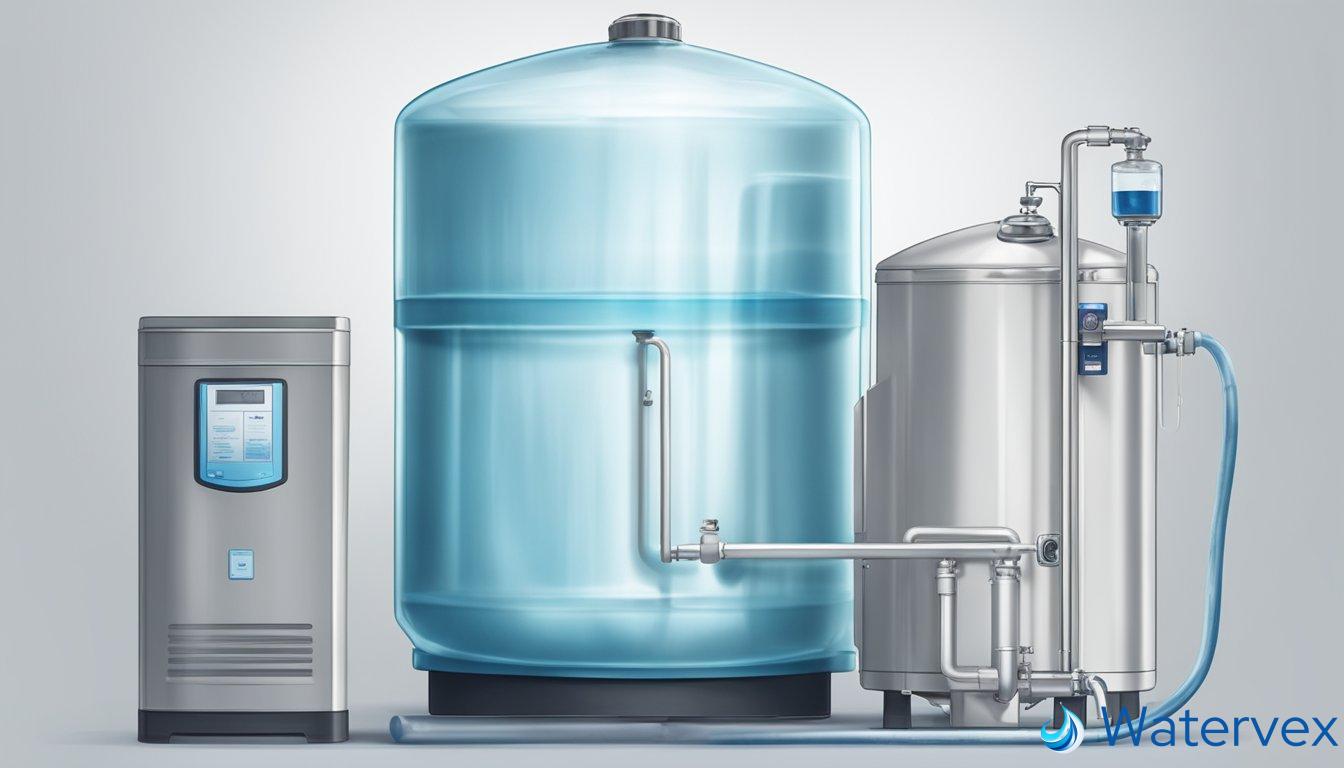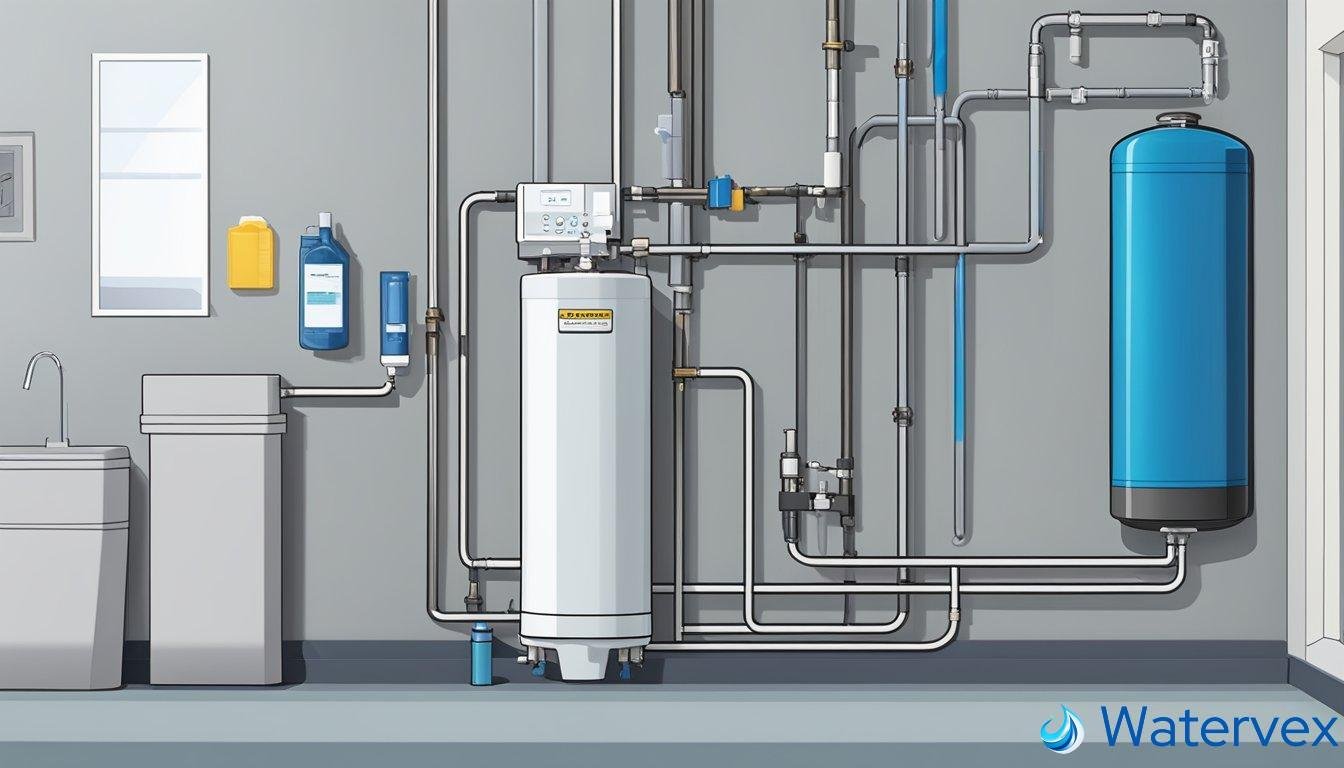Understanding when your water softener is not performing as it should is crucial for maintaining water quality in your home. A water softener’s primary function is to remove the minerals that cause water hardness, chiefly calcium and magnesium, through the ion exchange process. When a softener fails to do so, you may notice the effects on your skin, hair, appliances, and plumbing systems.

Recognizing the early signs of a malfunctioning water softener can save you from costly repairs and significant inconveniences. Subtle changes in water taste or an increase in scale residue on your fixtures may indicate that the softener’s efficiency is compromised. Regular softener maintenance is essential to ensure longevity and optimal performance, preventing minor issues from escalating into serious problems.
Key Takeaways
- Spot early signs of water softener issues to prevent extensive damage.
- Perform routine maintenance to sustain softener efficiency.
- Address changes in water quality and appliance performance promptly.
How to Diagnose a Faulty Water Softener?
Identifying the health of your water softener is crucial to ensure the softness and safety of your home’s water. Let’s get right into how to spot problems and decide when it’s time to call in experts.
What Are the Clear Signs of Water Softener Malfunction?
Unusual Noises or Behaviors: If you hear strange sounds coming from your water softener, this could indicate an internal problem. Similarly, if the unit is regenerating too often or not at all, it’s a sign that something’s not right.
Changes in Water Quality: Sticky residues on dishes or laundry, or a change in water taste, could suggest your softener isn’t working properly.
- Reduced Water Pressure: A sudden drop in water flow could mean that the resin beads in your unit need cleaning or replacing.
- Salt Bridges: This is a layer of hardened salt that can form in the brine tank, preventing proper regeneration. If you suspect a salt bridge, carefully break it up.
Visual Inspections: Look for clear signs of salt pellets piling up or not being used, which may require you to troubleshoot and possibly clean the tank.
Testing Water Hardness: Regularly test your water to monitor its hardness levels. If you find an increase in hardness, your water softener may not be functioning correctly.
When Should You Call a Professional for Water Softener Issues?
Repeated Issues: If the problems persist after you’ve attempted to fix them, it’s practical to consult a specialist.
- Complex Internal Issues: Maintenance that involves the internal mechanism of your water softener, like checking resin beads, should typically be handled by a professional. If you’ve ruled out external problems like salt bridges, it might be time to contact a service technician.
Regular Maintenance: Even without obvious signs of malfunction, scheduling a professional check-up can prevent future issues and maintain optimal water softener performance.
Installation or Replacement: Installing a new water softener or replacing parts should generally be done by a water treatment specialist to ensure it’s done correctly.
Safety Concerns: If you’re unsure about any aspect of your water softener’s function, especially when it involves electrical components, calling in an expert is the safest choice.
Remember, keeping an eye on these specific signs and acting promptly can prevent more significant and costly damage to your water softening system.
Understanding Your Water Softener

To ensure the longevity and efficacy of your water softener, it’s crucial to know its components and their specific roles, as well as to understand the regeneration process and how it can impact water quality.
Components and Their Functions
Brine Tank: The brine tank is a critical component of your water softener. This is where water absorbs salt, creating a brine solution that’s used during regeneration to restore the resin beads that do the actual softening of your water.
Resin Beads: Situated within the resin tank, these charged beads attract and hold onto minerals like calcium and magnesium, which are the culprits behind hard water.
Control Valve: Monitors the flow of water and triggers the regeneration cycle based on water usage or time.
Sediment Filter: Often accompanying a water softener, this filter removes physical particles before water enters the softening process.
The Regeneration Process
The regeneration process is vital for maintaining the function of your water softener. Let’s dive into this two-step process:
Backwash Phase: The system reverses water flow to flush dirt from the resin bed.
- Brine Draw: The control valve allows the brine solution from the brine tank to flow through the resin bed, which replenishes the resin beads with sodium ions needed for ion exchange.
- Rinse Cycle: Finally, excess brine is flushed out, leaving the resin beads recharged.
Look out for signs like changes in water taste or difficulty lathering soap—a soap test can reveal inefficiency. Iron presence in water, indicated by rust stains, hints at a malfunction, possibly due to a disruption in the regeneration cycle or the brine concentration balance being off.
Regularly check your water softener to ensure these components and processes function correctly, as they’re at the heart of preventing the unpleasant effects of hard water.
Maintenance and Troubleshooting

Knowing when your water softener is failing is crucial to maintain water quality in your home. Proper maintenance and recognizing issues early can prevent costly repairs.
Preventive Maintenance Tips
Check the salt levels monthly and refill as necessary to prevent salt bridges and keep the ion exchange process efficient.
Inspect for salt mushing; this occurs when dissolved salt recrystallizes, forming a sludge on the bottom, which requires cleaning of the brine tank.
Clean the resin bed once a year if your water contains iron or you use well water. Products specifically designed for water softeners are needed for this task.
Monitor your water softener’s lifespan; typically, a well-maintained unit can last between 10 to 15 years.
Common Issues and How to Fix Them
Hard Water Stains and Dry Skin:
If hard water signs appear, test your water’s hardness. A simple kit can help you determine whether your softener is working properly.
Leaks and Clogged Pipes:
A leak could be due to loose connections, which you can hand tighten. For clogs, check for blockages in the line and clean filters to restore flow.
Scaling and Fouling:
If you see scaling on fixtures, your system may need recalibration for your water’s hardness, or it might be time to replace the resin beads inside your softener.
Troubleshooting a Whirlpool Water Softener:
Following the manufacturer’s instructions, perform a manual regeneration to reset the system – sometimes it’s as simple as that. If problems persist, consult your user manual or contact support for your specific model.

